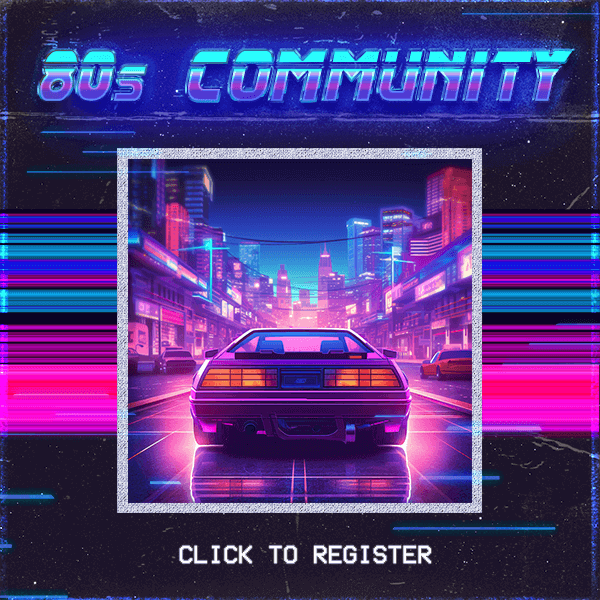We take a deep dive into Fulci’s most notable 1980s horror works, explore their impact on the genre, and look at why they continue to captivate horror fans more than four decades later.
The Gates of Hell Trilogy
One of the most iconic and essential parts of Fulci’s 1980s career is his loosely connected trilogy of supernatural horror films often referred to as the Gates of Hell Trilogy.
- City of the Living Dead (1980) This eerie and atmospheric film kicks off the trilogy with a tale about a priest’s suicide that opens a gateway to hell. The narrative is fragmented and dreamlike, but the mood is consistent: oppressive, otherworldly, and doom laden. Fulci’s flair for grotesque imagery is on full display here maggot storms, brain drilling, and spontaneous vomiting of entrails all feature prominently. The film prioritizes mood over logic, creating a nightmare experience that lingers.
- The Beyond (1981) The Beyond is a surreal horror experience that defies conventional storytelling. Set in Louisiana, the plot involves a woman who inherits a hotel that sits on one of the seven gates of hell. What follows is a descent into madness, featuring blind oracles, tarantula attacks, and one of the most haunting endings in horror history. Fabio Frizzi’s eerie score enhances the film’s hypnotic quality. The Beyond captures Fulci’s philosophy: logic is less important than atmosphere and visceral reaction.
- The House by the Cemetery (1981) The final installment in the trilogy takes the terror into a gothic New England mansion with a horrific secret in its basement. More linear than The Beyond, this film blends slasher elements with classic haunted house tropes. It showcases Fulci’s use of children in disturbing roles and continues his fascination with death as a constant, creeping presence. The film’s pace and tone make it one of Fulci’s more accessible 80s entries.
Zombies, Gore, and Controversy
Though Fulci had already made his mark with 1979’s Zombie, his obsession with the undead continued into the 80s.
Zombie 3 (1988) While Fulci didn’t complete Zombie 3 due to health issues (the film was finished by Bruno Mattei and Claudio Fragasso), it still bears his signature style in parts. Despite the chaotic production, Zombie 3 carries some of the delirious violence and apocalyptic despair that fans associate with Fulci. It’s uneven but interesting as a glimpse into what could have been had Fulci been at full strength.
The New York Ripper (1982) The New York Ripper blends giallo and slasher with extreme misogyny and graphic violence. Set in a sleazy, decaying version of New York, the film follows a killer who taunts police while murdering women in increasingly brutal ways. It’s been banned in several countries and remains divisive. Yet it captures a different kind of horror urban, sadistic, and grounded in reality. Critics derided it as exploitative, but others view it as a bold, if uncomfortable, exploration of violence in media.
Manhattan Baby (1982) A supernatural tale involving ancient Egyptian curses, possession, and mysterious amulets, Manhattan Baby is often seen as one of Fulci’s weaker efforts. However, it still features his trademarks eerie atmosphere, uncanny children, and sudden bursts of violence. Though it lacks the coherence or raw impact of his better known films, it demonstrates Fulci’s willingness to experiment with different horror subgenres.
Aenigma (1988) In the late 80s, Fulci experimented with telekinetic horror and American style teen revenge tropes. Aenigma, features a paralyzed girl using supernatural powers to exact revenge on her bullies. It plays like a European cousin to Carrie, filtered through Fulci’s blood soaked lens. These films didn’t achieve the cult status of his earlier work but reflect a director still evolving.
The Decline and Legacy
By the late 1980s, Fulci’s health began to decline, and so did the budgets and quality of his projects. Still, even his lesser films retained sparks of creativity and moments of shocking brilliance. Fulci never conformed to Hollywood horror trends. His work was visceral, poetic, and defiantly Italian.
Legacy and Modern Appreciation
Lucio Fulci’s 80s horror films were not critical darlings when first released. Many were dismissed as incoherent or purely exploitative. However, today, they’re studied and celebrated by horror scholars and fans alike. Boutique labels like Arrow Video and Blue Underground have restored and re released many of his classics, complete with retrospectives, commentary tracks, and scholarly essays. Fulci’s name now appears alongside Argento and Bava as one of the architects of Italian horror.
Modern directors from Quentin Tarantino to Eli Roth have cited Fulci’s influence. His unapologetic embrace of gore, surrealism, and dream logic resonates in an era that values stylistic horror. The 1980s were Fulci’s playground, and while not every film was a masterpiece, each added a layer to his legacy.
80s Insight: During the 1980s, VHS tapes and mom and pop video rental shops helped spread Fulci’s films far beyond Italy. Many fans discovered The Beyond or City of the Living Dead on faded tapes in horror sections, often banned or cut in their home countries. Fulci became an underground legend thanks to the allure of the forbidden and the visceral.
Lucio Fulci’s contribution to 1980s horror is impossible to ignore. His films are not for the faint of heart, nor are they easy to digest. But in a decade overflowing with slasher clones and formulaic thrillers, Fulci’s work stood out. His 80s catalog is a fever dream of death, dread, and decay a haunting journey into the bizarre that continues to thrill those brave enough to explore it. For fans of horror history, no study of the genre’s evolution is complete without a visit to Fulci’s terrifying 80s vision.
If your heart can handle it, press play on The Beyond and prepare to descend into one of horror’s most disturbing dreamscapes. Fulci is waiting.











